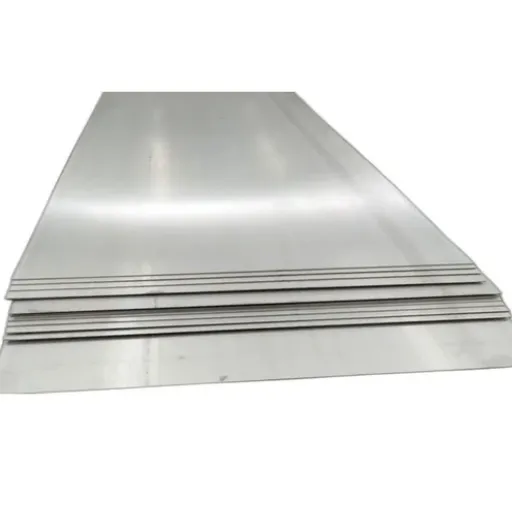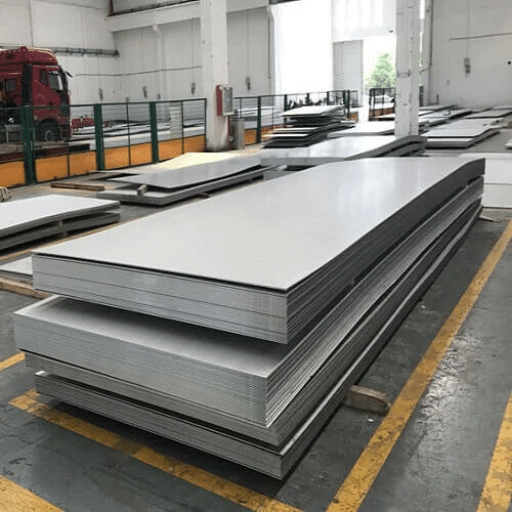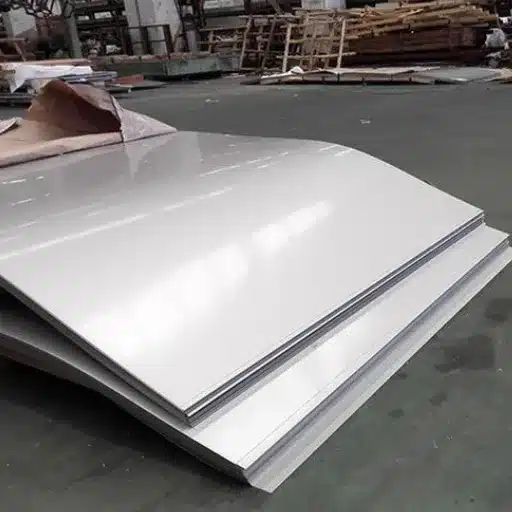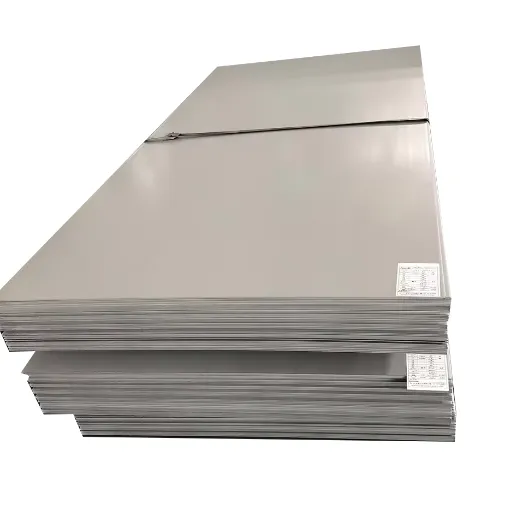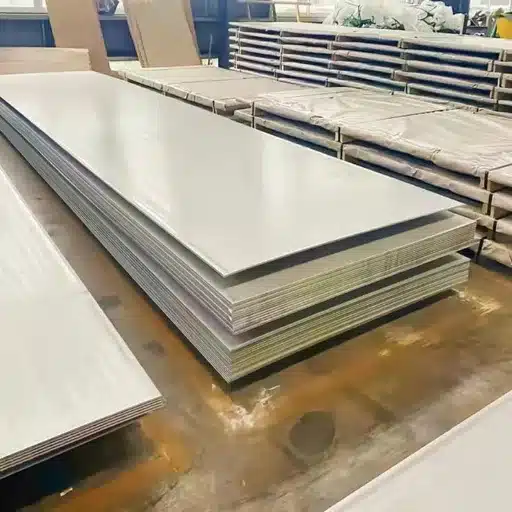The galvanized steel coil is a multipurpose and commonly used material that is crucial in an enormous number of industries, the building industry, and the automotive manufacturing industry as well. Its longevity, resistance to rust, and low cost make it a necessary resource for both huge and tiny projects. However, the question arises as to what is galvanized steel coil exactly and what is the story of its manufacturing. How does the galvanization extend its properties and why is it the most favored material? Here, we are going to talk about the galvanization process in detail along with the applications of galvanized steel coil and the different advantages the industry offers. Whether you are a veteran in the field or just starting out, this guide is meant to be a source of good information about this indispensable part of modern engineering and manufacturing.
Overview of Galvanized Steel Coil
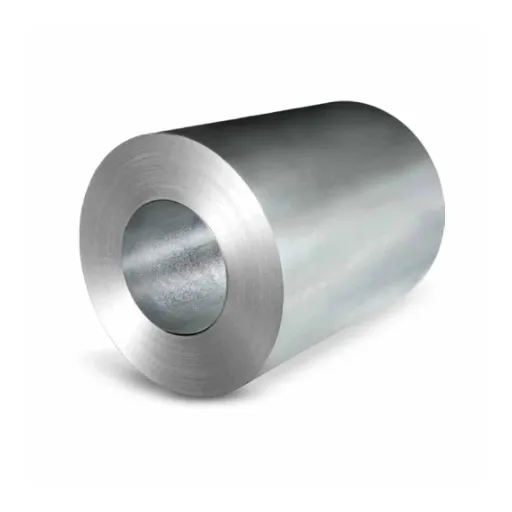
Definition and Characteristics of Steel Coils
Steel coils are the continuous steel strips that are rolled up into a coil form after being processed through a rolling mill. They are the main raw material of many industries because of their versatility, durability, and the fact that they can be easily transported and stored in coils. Normally, they are made from carbon, stainless steel, or alloy steel, and further classified according to the finishing process, for instance, hot-rolled or cold-rolled steel coils.
Hot-rolled steel coils are produced at high temperatures, usually above 1,700°F, thus making it possible for the steel to undergo recrystallization during the rolling process. This results in the material being easier to shape and form, but with a product having a rougher surface finish and less precise dimensions. The applications of hot-rolled coils are mostly in places where the finish and dimensional accuracy do not matter, such as construction and structural components.
Cold-rolled steel coils, in contrast, are manufactured at or near room temperature which leads to better dimensional accuracy, smoother surface finishes, and improved mechanical properties. Such features make cold-rolled steel suitable for applications that require not only a high-quality finish but also tight tolerances, e.g., automotive parts, appliances, and precision machinery. The ability to modify properties of steel coils according to specific processes makes them very important for modern manufacturing as well as engineering sectors.
Understanding the Galvanization Process
Galvanization is a method of protection that consists of applying a zinc layer to iron or steel in order to avoid corrosion and prolong the life of the metal. The zinc acts as a barrier that keeps moisture and oxygen, which are the main reasons of rust and metal decay, away from the steel. Besides, it offers the so-called sacrificial protection: if the coating gets scratched, the zinc will corrode instead of the steel, thus the latter is still protected.
Among all the galvanization methods, hot-dip galvanizing is the most popular one. In this method, steel pieces are soaked in liquid zinc at around 860°F (460°C). The process creates a very strongly connected alloy layer of zinc-steel, which ensures high corrosion resistance and mechanical strength at the same time. Though, there are other techniques like electro-galvanizing where zinc is deposited using an electric current and mechanical galvaanizing that involves friction and zinc powder. The choice of the method depends on the particular application needs like exposure to the environment and budget.
Steel that has been galvanized is very popular in many industries such as construction, vehicle manufacturing, and infrastructure. Its property of being resistant to corrosion makes it perfect for outside installations that include bridges, fences, and roofs, while its low weight and toughness are the qualities that make it suitable for parts and frames of cars that require a lot of performance. The combination of low costs, high efficiency, and durability of the galvanization process ensures that it is a crucial factor in the strength and success of modern engineering projects.
Types of Galvanized Steel Coils
Galvanized steel coils are created through the zinc plating of steel, which not only prevents the formation of rust on the base metal but also makes it last longer. The coils have different types, which are each formed according to the specification that very closely matched industrial needs and are scattered by their method of galvanization and physical properties.
Hot-Dip Galvanized Steel Coils
The hot-dip galvanized coils are made by dipping steel into a zinc bath. This technique results in a robust and consistent layer that is the best among all types of coating when it comes to preventing corrosion. The coils find a lot of use in construction, where the brutal environments need the beams, panels, and pipelines that are part of the structure to be resistant to the corrosive media. The coating comes in different thicknesses for different applications, making it very adaptable.
Electro-Galvanized Steel Coils
Zinc is deposited on electro-galvanized steel coils by passing a direct current through an electrolytic bath containing zinc as the anode and the steel as the cathode. This coil has a thinner and smoother coating than hot-dipping. Although the corrosion resistance is lower, the smooth finish is beneficial for the automotive industry and electrical housing where aesthetics and accuracy are very much a part of the process.
Galvannealed Steel Coils
The coils are made by zinc-iron alloying through a zinc bath after which the zinc coating is fused to the steel at higher temperatures. This gives a matte surface with excellent characteristics for welding, painting, or any further processing. Galvannealed coils are the favorites in the automotive and appliance manufacturing industries because of their ductility and compatibility with other materials.
All the types of galvanized steel coils have their own merits, which practically means that the engineers and manufacturers can pick the one that best matches their project needs. By taking care of different aspects like corrosion resistance, type of coating, and surface finish one can be sure of getting the best performance and durability in the wide range of applications mentioned.
Manufacturing Process of Galvanized Steel Coils
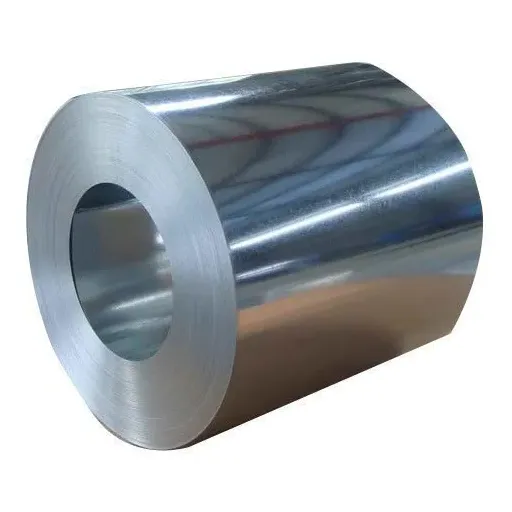
Raw Materials Used in Production
The production of galvanized steel coils is a process that depends on the careful selection of raw materials to meet the most demanding quality and performance standards. The main component is the steel sheet that has been either cold-rolled or hot-rolled, which will be the substrate. The composition of this steel is usually iron, carbon, and, depending on the intended use, other alloying elements (like manganese, silicon, and phosphorus) in varying proportions so as to give the desired mechanical and chemical properties.
Zinc is the coating that will be applied in layers to prevent corrosion. The purity of the zinc used is indeed very high, generally speaking, about 99.99%, to provide uniformity and durability for the coating. There are also cases when alloys of zinc that have very little of aluminum, magnesium, or silicon are used to the purpose of improving the adhesion of the coating, making the coating quite resistant to corrosion and giving the surface a nice appearance.
Cleaning agents and fluxes are additional important materials that must be used, and they will be applied in the surface preparation step. Cleaning with alkaline or acid solutions will be used to get rid of contaminants like oil, grease, and rust from the surface of the steel. Fluxing agents, like zinc chloride or ammonium chloride, will work to foster a strong metallurgical bond between the steel and the zinc during the galvanizing process.
The precision in processing these raw materials together leads to coins of galvanized steel that are especially tailored to fulfill the industrial requirements of strength, flexibility, and longevity. The careful selection and combination of these materials are central to the performance characteristics of the final product being superior.
Step-by-Step Process of Galvanization
Step 1: Surface Preparation
The procedure of galvanization starts with the steel surface preparation to guarantee the best bonding of the zinc coating. It is done by cleaning the steel in a number of steps, which consists of degreasing, pickling, and rinsing. The purpose of degreasing is to get rid of oils, grease, and other impurities, while pickling employs acidic solutions to get rid of rust, mill scale, or iron oxides from the surface. The next process is rinsing, where the steel is thoroughly washed to eliminate any acidic residues, thus, leaving behind a clean surface ready for the subsequent step.
Step 2: Fluxing
Steel cleaning is followed up by fluxing, which is a crucial process that enhances the steel’s zinc bond. The fluxing process consists of dipping the steel in a solution, usually containing zinc ammonium chloride, which keeps the steel surface from oxidation before it goes into the molten zinc bath. A thin layer of flux is deposited on the steel which serves as a bonding agent during the galvanization phase.
Step 3: Hot-Dip Process
The hot-dip process is the last stage of galvanization. The prepared steel is then lowered into a bath of liquid zinc that is heated to around 840°F (449°C). The zinc at this stage will chemically bond with the steel forming a series of zinc-iron alloy layers with a layer of pure zinc on top. The result is a multi-layered coating that not only acts as a strong barrier against corrosion but also increases the steel’s lifespan. After the galvanized steel is taken out of the zinc bath, it is then cooled down to a certain temperature, subjected to quality inspection, and finally finished according to the standards of the respective industry so that it can be used in various applications. Such a meticulous procedure guarantees that galvanized steel will provide consistent, long-lasting performance even in the most demanding environments.
Quality Control and Thickness Considerations
The performance and lifespan of galvanized steel depend on its quality to a very large extent. The quality control processes are very thorough and encompass the entire production process, including visual examinations and measurements to confirm evenness of coating. The tests that are run include those for measuring thickness, checking adhesion, and the510 salt spray test to assess the ability of the galvanized layer to shield the steel from rust formation.
The zinc coating’s thickness is the most important aspect since it is directly linked to the life span of the galvanized steel in a corrosion-prone area. Each industry has its own set of standards like ASTM A123 and ISO 1461 that designate minimum thickness of the coatings appropriate for their specific uses and respective exposures to the environment. For example, structural steel used outdoors or in coastal areas is usually coated with thicker layers than that which is used indoors because of its greater moisture and pollutant exposure. Non-destructive electromagnetic testing is among the advanced inspection techniques that are being increasingly employed to ensure the accuracy and reliability of thickness measurements without affecting the material’s integrity.
And the strict observance of these quality criteria guarantees that the products made of galvanized steel will fully meet or even surpass the requirements of the contemporary construction, infrastructure, and industrial applications.
Common Applications of Galvanized Steel Coils
Construction and Building Materials
Galvanized steel coils are the most popular among the construction industry since they are very durable, resistant to corrosion, and cost-effective. Roofing has been one of the main uses, with galvanized steel sheets as the main component of the roof giving the building a robust and waterproofing solution along with the capability of enduring very harsh environmental conditions. Moreover, steel is used in the production of structural frames, wall panels, and siding through which the advantages of longevity and low maintenance compared to traditional materials are gained. Their different thicknesses and finishes give an option for further customization of the architectural needs which makes it a favorite among different building designs.
Apart from roofing and structural applications, galvanized steel coils are at the forefront in the development of infrastructure. Due to their strength and durability against extreme weather and pollution, they are used in the making of bridges, highway barriers, and utility poles, and the like. Moreover, the practice of galvanizing has advanced to the point where it now has the capability of producing high-performance steel that meets even the strictest environmental and regulatory standards without the loss of quality. This continuity of modern construction projects to the end of sustainability-setting without losing the benefits of being economically and functionally attractive is what the practice of galvanizing has offered up to now.
The same goes for residential construction. Galvanized steel is used in everyday products like HVAC equipment, plumbing pipes, and garage doors. Architectural designs also take advantage of the aesthetic and practical aspects of galvanized steel, using it for facades, decorative elements, and reinforcements. The fact that urban areas are growing larger and larger, galvanized steel can no longer be neglected since it is the only material that can make buildings stay strong, cheap, and ready to meet the requirements of a modern fast-paced world.
Automotive Industry Applications
Galvanized steel is a cornerstone of the automotive industry, marking a new era in durability and safety that will be present in every modern vehicle. Its stunning corrosion resistance makes it a primary choice for the production of main parts like car frames, body panels, and undercarriages. Steel that is galvanized not only helps the car makers to increase the number of years to use the car, but it also cuts down the maintenance costs and improves the performance over time.
Also, the combination of its low weight with great strength matches the need for fuel-efficient cars and preserves the integrity of the structure. The steelmakers have got a strong hand in this—among the innovations is the zinc coating, which has been considerably improved, making the parts lighter at the same time safer. The use of galvanized steel also contributes to the environment by supporting the efforts in sustainability, that is, it is easily recyclable—thus reducing the impact on the environment.
Galvanized steel has stretched its range from passenger cars to commercial vehicles where it still drives innovations in safety, efficiency, and sustainability, thus, the automotive industry being a major provider for modern transportation solutions.
Home Appliances and Consumer Goods
Galvanized steel is a basic material in making home and consumer goods due to its astonishing durability, resistance to corrosion, and economic efficiency. Its usage in making products like fridges, washing machines, ovens, and air conditioners is extensive, where the structural strength and longevity of the product are very important. The zinc coating on the galvanized steel gives a very strong and effective barrier against rust and also prolongs the lifespan of these appliances even in humid or high moisture areas like kitchens and laundry rooms hence, the appliances will last longer.
One of the major benefits of using galvanized steel in this sector is its flexibility to be processed in large scale by means of stamping, forming, or welding techniques, which in turn, make the process of manufacturing faster and cheaper while at the same time producing good quality output. Its great surface conditions also make it a very good substrate for subsequent treatments like painting or powder coating which will enable manufacturers to produce not only beautiful but also custom-made designs that will appeal to the wide and varied tastes of consumers. With the demand for energy-efficient and eco-friendly products on the rise, galvanized steel will be the critical factor in the appliances’ ability to conform to the strict safety and environmental standards without sacrificing either effectiveness or cost-efficiency.
The eco-friendliness of galvanized steel gives it the edge over other materials in the consumer goods industries of the present day. The material’s ability to be recycled means that old appliances that have reached their end of life can be easily and efficiently reactivated, thus reducing the impact of the production processes on the environment and making the practice of circular economy easier. Moreover, as the home appliance sector goes through technological revolution, the applications of galvanized steel will still be there, only that they will be more advanced, such as through ultra-thin coatings and hybrid materials that achieve the highest performance while being in line with the global sustainability goals. Strength, versatility, and eco-friendliness are some of the reasons that galvanized steel has and will continue to be used in the manufacturing of long-lasting and inventive home appliances and consumer products.
Advantages of Using Galvanized Steel Coils
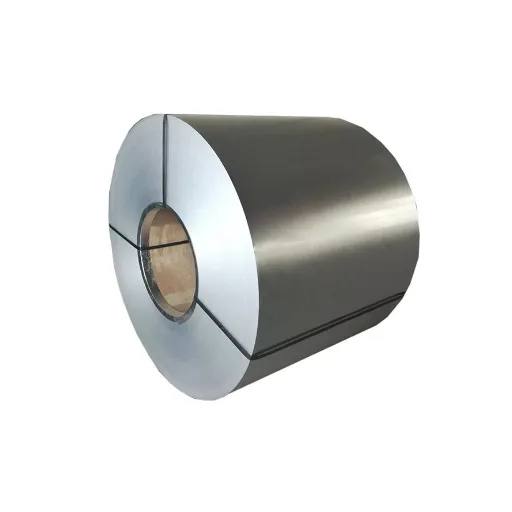
Corrosion Resistance and Longevity
Galvanized steel coils are known all around the world, for their amazing resistance to corrosion and very long life span, and hence, they are widely used in several industries. The first covering of zinc which is done while the steel is rafting becomes a strong barrier against all the undesirable factors like, moisture, air, and dirt. This layer not only stops air but moreover acts as a protector, thus giving the material double the life span. Here are five principal factors of its non-corrosive character and extended life:
Zinc Coating Protection
The zinc layer presents a reactive barrier that gives up its life to prevent the oxidation of the steel underneath, thus ensuring long-term durability in even the most unfriendly environments.
Uniform Surface Coverage
The coils of galvanized steel present a uniform layer of zinc which guarantees that the whole surface has the same protection and there are no places formed where corrosion could start.
Resistance to Harsh Conditions
The steel coils will not give up easily when they are exposed to industrial pollutants, coastal salt spray, or extreme weather fluctuations; they will adequately fight all these factors and so, they are good for many applications.
Adherence to Standards
The galvanized steel meets the corrosion resistance standards of the world like ASTM A123/A123M, allowing for a reliable performance and a lifespan of more than 50 years in controlled conditions.
Low Maintenance Requirements
The very low chance of corrosion in galvanized steel leads to an equally low need for inspections and repairs, hence the cost of maintenance in the long run, is significantly reduced, while still keeping the structure intact.
All these characteristics together, point to the technical superiority of galvanized steel coils thus putting them on top as the best material for high-performance in harsh environments.
Cost-Effectiveness and Availability
Galvanized steel coils are the best in the long run as they are the most economical solution. They are not only long-lasting but also require less maintenance and their manufacturing process is the most efficient one which takes advantage of large-scale production. The initial purchase of galvanized steel is paid back through its resistance to wear and tear as well as low maintenance which both lead to saving costs over time. Besides, coating technology is developed which has made the galvanization process more efficient, lower-costs of production and at the same time providing excellent resistance to rust. The combination of properties like cost-effectiveness plus enduring nature makes it almost everywhere in industries like construction, car making, and manufacturing among others.
Galvanized steel coils become globally available due to a strong supply chain network and the adoption of modern galvanization methods on a large scale. The leading manufacturers have set up their plants in strategic locations to cater to the increasing demand, thus providing a steady supply to both developed and developing markets. The uniformity in the processes of galvanizing also acts as an advantage in the availability aspect since it reduces the complexities involved in production while the output is of high quality. All these points make the material less difficult to be found and used in all kinds of climates and places where the operations have different requirements.
The market figures suggest a gradual increase in the demand for galvanized steel coils, mainly due to the construction industry and the infrastructural projects being done all over global areas. Recent research on the steel industry says that the market will grow with an annual rate of around 5-6% for the next ten years. One of the reasons for this is that there is increasing demand for materials that are good for the environment and at the same time cost-effective, which is in line with the global trends of wanting things that last long and are eco-friendly. Such scenarios further highlight the importance of using galvanized steel coils in modern times which leads to their continuous reign in the materials market.
Versatility in Design and Functionality
Galvanized steel coils are extremely versatile and thus are widely used in industrial, commercial, and residential applications. Their strong corrosion resistance, which is due to the zinc coating that serves as a barrier, makes them suitable for use in areas that are prone to moisture, humidity, and different kinds of pollutants. The construction, automotive, energy, and manufacturing industries all make use of galvanized steel coils in products that range from structural parts to intricate machines where long life and low maintenance are of utmost importance. These coils can be made to order according to different specifications in the areas of thickness, width, and coating grade which means they can be supplied to meet the ever-changing technological needs of different industries.
The good points of galvanized steel coils help to a great extent in their utility. Thanks to the malleability of the material, it is possible to fabricate it with a great deal of accuracy into different shapes and configurations without sacrificing the strength of the structure. This very quality is what makes going for architectural innovations and the use of building of lightweight yet strong frameworks, roofs, wall coverings, and panels is possible. Moreover, the visual appeal of galvanized steel has made it very popular in projects that need both aesthetic and functional qualities, the building exteriors of modern buildings or special vehicle parts being the examples where the visual appeal of galvanized steel can be enhanced through coatings or finishes.
Galvanized steel coils, from a functional point of view, are a big contributor to operational efficiency because they cut down on long-term costs that are associated with material failure and replacements. They are very durable by nature which means that their lifecycle expenses are also low. This is a big advantage in the case of large-scale infrastructure projects or in the equipment manufacturing sector where the long life of materials is necessary. Moreover, new developments in galvanization processes, such as the application of high-strength alloy coatings, experiment with the limits of performance and at the same time meet the strict regulatory standards for environmental sustainability. The combination of superior mechanical properties and environmental compliance advocated by the rope adoption of galvanized steel coils as a top-tier solution for modern engineering challenges.
Industry Trends and Future of Galvanized Steel Coils
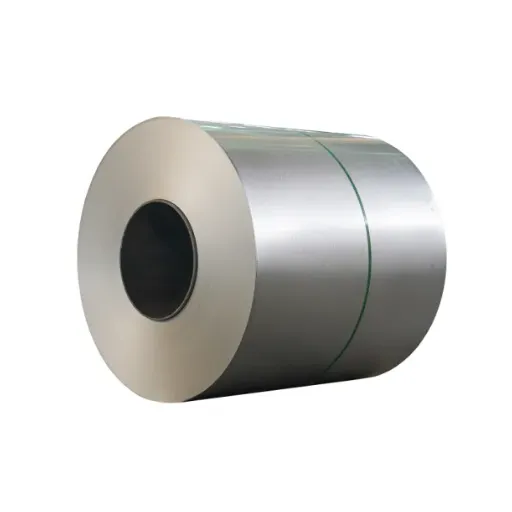
Emerging Technologies in Steel Production
The steelmaking industry is going through a revolution thanks to the latest technology which not only improves efficiency but also lessens the environmental impact and the high performance material demand is met. One of the major innovations is the incorporation of advanced automation and artificial intelligence (AI) into the production process. AI-enabled machines are capable of constant monitoring and forecasting of maintenance operations during various stages of production which in turn leads to lesser downtime and better quality age respectively. These breakthroughs help manufacturers to keep up the standards with no or less cost.
Electric Arc Furnace (EAF) Innovation
The electrical arc furnace (EAF) system is another key innovation in the sector. EAFs are unlike traditional blast furnaces in that they require electricity and not carbon dioxide. This technology melts scrap steel and other materials and thus leads to a bigger drop in carbon dioxide emissions compared to the traditional process. Hence, the method is in line with the world manufacturing eco-friendly calls and is gaining acceptance in the areas where environmental sustainability is the main focus. EAFs also provide an opportunity for the integration of recycled materials ensuring the process to be more circular and resource efficient.
Moreover, advancements in coating and galvanizing technologies are helping to solve the problem of the demand for specialized applications. The industries that are researching for instance, nano-coatings and the advanced zinc-aluminum-magnesium (ZAM) alloys, are also working for the same purpose which is to deliver the utmost protection against corrosion even in the most hostile environments. These coatings are used in a variety of industries, from automobiles to renewable energy, where the coated steel must be able to resist wear and tear and perform for a long time. The steel industry through the integration of such technologies will not only satisfy the changing market and regulatory requirements but also will place itself in an environmentally friendly and a future full of technological advancements.
Innovations in Coating Processes
Innovations in coating processes have been the major forces for the changes that are taking place in many modern industries, with steel and metal industries at the forefront. One of the most significant technological feats that have redirected this trend is the making of so-called high-tech anti-corrosion coatings through the use of nanotechnology. These coatings, which are mainly made of nano-engineered materials, claim with their improved barrier features, better binding abilities, and greater resistance to wear when compared with the conventional ones. The coatings do not only help to extend the life of the material but also to cut down the cost of maintenance through provision of quit the oxidation protection in very harsh surroundings. Furthermore, the move towards automated processes allows for very precise application techniques leading to the best overall production efficiency because of total reduction of material usage and waste.
The other landmark development is seen in the use of environmentally friendly coating technologies together with the traditional ones. For example, waterborne and powder coatings have come up as the alternatives that make the significant reduction of total organic compound (VOC) emissions, thus becoming the industrial processes that comply with the toughest regulations. Such changes are indeed very important when talking about industries that are making a shift to low-carbon operations in order to achieve global goals on climate. Another area that has been attracting attention is the area of self-healing coatings with the use of microcapsules or other reactive materials that repair the damage done automatically which means that the human intervention is not needed at all. The introduction of such measures not only guarantees a better product performance but, at the same time, it helps the companies to create and maintain the image of being environmentally and safety standards compliant.
What is more, the digital transformation has played a very important role in the innovations in coating processes. The smart manufacturing systems supported by AI and IoT are the ones that make real-time monitoring and optimizing of the coating parameters possible. One of the benefits of predictive analytics for the manufacturers is that they are able to solve the defect issues before they appear, foresee the coating life, and maintain the quality of the application uniformly throughout. In addition, robotic systems along with advanced spraying technologies have made it possible for industries to upscale their processes and at the same time, be able to respond to the different and complicated production requirements in a more efficient way. The combination of these state-of-the-art achievements is changing the way coating processes are viewed, while their importance in the development of various sectors that depend on durable and sustainable materials is being reinforced.
References
- GALVANIZED SHEET STEEL: John Summers’ New Continuous Hot-Dip Galvanizing Line
This source discusses the increased demand for galvanized sheet and coil steel and the installation of a continuous hot-dip galvanizing line. - Resistance Spot Welding of Galvanized Steel: Part I. Material Variations
This paper explores material variations and process modifications in resistance spot welding of galvanized steel. - The Name “Galvanized Steel Sheet” and Its Classification
This document provides insights into the classification and naming conventions of galvanized steel sheets. - The Tariff Classification and Country of Origin of Certain Steel Coils
This source discusses the classification and origin of steel coils, including hot-dipped galvanized coils. - Effluent Guidelines & Standards for the Coil Coating Industry
This document outlines the materials used in coil coating, including steel and galvanized steel.
Frequently Asked Questions (FAQ)
Q: What is a steel galvanized coil?
A: A steel galvanized coil is a kind of steel that has undergone galvanization, a process of coating it with zinc, to prevent corrosion. The zinc layer acts as an isolating agent between the steel and the harmful elements in nature, thereby, increasing the steel products’ durability and lifespan that are made and packaged from it.
Q: What are the advantages of using galvanized steel coils?
A: The use of galvanized steel coils comes with their main advantages which are the highest resistance to corrosion, longer life and maintenance costs that are less. Application of the zinc coating to steel results in a protective layer that keeps the rust and degradation at bay, thus making it suitable for a variety of industries and applications like construction and automotive.
Q: How is the zinc coating applied to the steel coil?
A: The application of the zinc coating process consists of dipping the steel in a liquid zinc bath. This technique produces a continuous metallic layer that bonds with the steel and gives it an efficient barrier against withering situations, and at the same time extends the to finished steel products.
Q: What types of steel are available in galvanized coil form?
A: Galvanizing is a process that can be applied to a wide range of steels such as low carbon and high-strength steels. The application of galvanized coils depends on the final application and the mechanical properties required from it.
Q: Can galvanized steel coils be customized to specific sizes?
A: Yes, the steel coils can be produced exactly to your specification including the thickness, width, and length. Customized dimensions ensure that the processed steel products meet the exact requirements of various industries and their customers.
Q: How does galvanized steel benefit the environment?
A: The protective zinc layer of galvanized steel is an environmental advantage as it reduces the frequency of replacement and thus waste. Besides, it is a recyclable material and this support helps to the green initiatives in the industries using steel products.
Q: What is the difference between galvanized steel and galvalume steel?
A: The main difference between galvanized and galvalume steels is the nature of coatings. While the former has only a zinc coating, the latter consists of a zinc-aluminum mixture, which offers better corrosion resistance and thermal performance, thus suitable for different applications.
Final Thoughts
Galvanized steel coils represent a perfect blend of durability, cost-effectiveness, and versatility, making them indispensable across multiple industries. As technology continues to advance, we can expect even more innovative applications and improved manufacturing processes that will further solidify galvanized steel’s position as a cornerstone material in modern engineering and construction.


